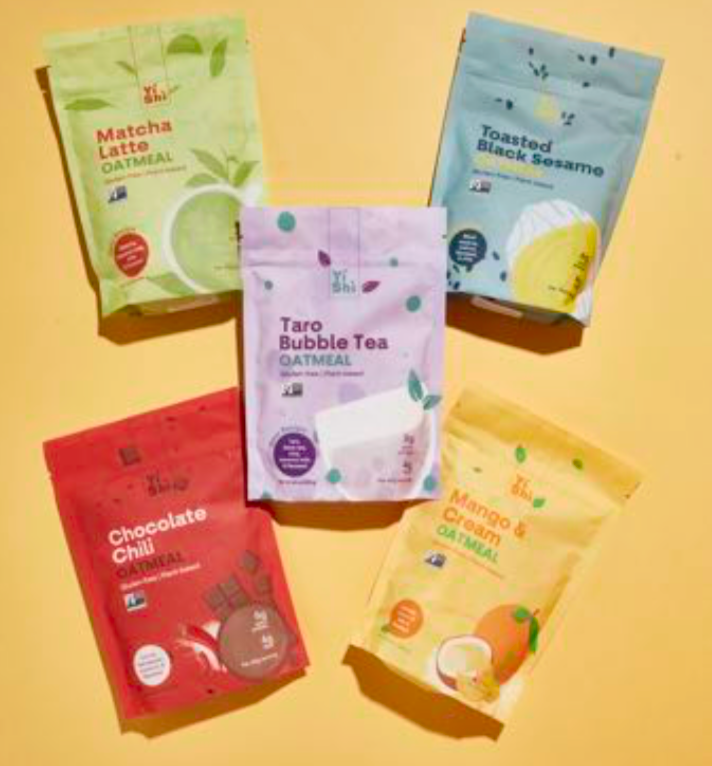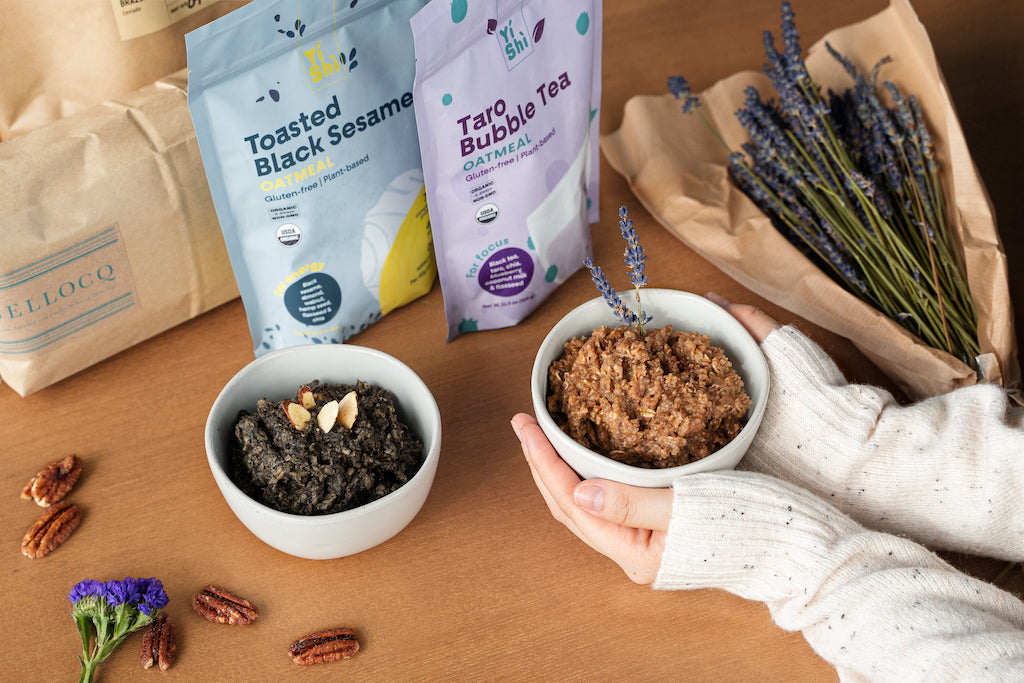
When you’re in the mood for something warm, tasty, and familiar, few things hit quite like oatmeal and porridge, the ultimate comfort foods. Each filling bowl is perfect for starting your day off on a cozy note whether you’re getting ready to face the workday or settling in on a cold, rainy weekend.
Because they’re so similar, oatmeal and porridge are often referred to interchangeably. But there are some key distinctions that set them apart from each other. If you’ve ever found yourself wondering what the difference is between oatmeal and porridge, here’s your answer – plus how Yishi’s delicious flavors like Toasted Black Sesame Oatmeal can satisfy your cravings for both!
What is porridge?
Porridge is sometimes known as “hot cereal,” but don’t let the name fool you. Even though porridge is a popular choice for a warm, hearty breakfast, the various recipes and toppings you can add mean it can also be eaten around the clock.
Porridge is made by boiling grains, legumes, or other starchy carbohydrates in hot liquid like milk or water. The starches begin to break down as they cook, eventually becoming thick, rich, and creamy. Some popular base ingredients that are used to make porridge include:
- Rice
- Wheat
- Oats
- Corn
Once fully cooked, you can either eat porridge plain or add sweet or savory toppings.
Porridge is one of our oldest foods: in fact, there’s evidence that humans have been eating different kinds of porridge throughout the entire history of mankind.
Depending on where you are in the world, porridge recipes can look a little different. For example:
- Porridge is a popular breakfast item in Scotland, where people have been boiling oats in water and finishing it with a pinch of salt since Medieval times.
- Congee is another great example of a porridge-type dish. This savory dish is a staple found in many cultures throughout Asia. It’s made by boiling rice in water or broth.
- Common congee ingredients and toppings include meat, chicken, fish, sesame seeds, soy sauce, eggs, and vegetables.
What about oatmeal?
Traditionally, oatmeal is made by boiling rolled or steel-cut oats in either hot water or milk until it softens and cooks through. So technically, oatmeal is a type of porridge.
However, there are still some key differences between porridge and oatmeal that puts oatmeal in a category of its own. Oatmeal generally isn’t boiled down to the point that the starches break down, like in porridge. In addition, oatmeal can be prepared using other methods, besides boiling.
For example, you can make overnight oats by soaking the oats in your liquid of choice for several hours or overnight until it becomes soft enough to eat. This kind of oatmeal is then served cold, as opposed to porridge which is traditionally a hot dish.
While porridge can be served savory or sweet, oatmeal is more often served sweet, with toppings like cinnamon, honey, and fruit -- or fun flavors like Red Bean Berry, Sweet Osmanthus, Matcha Latte, and Taro Bubble Tea if you’re eating one of Yishi’s oatmeal products!
How healthy are porridge and oatmeal?
The healthiness of porridge and oatmeal depends on the ingredients that are used to make them.
Because porridge can take the form of many dishes, its nutritional density can vary widely.
For example, congee has been eaten as a practical and nutrient-dense meal since approximately 1000 B.C., when it originated during the Zhou Dynasty in China. It’s easily digestible and promotes gut health – historically it was used to feed people suffering from stomach aches and long-term illnesses.
On the other hand, oatmeal has plenty of well established health benefits. Whole-grain oats are nutrient-dense and full of fiber, vitamins, and minerals. Oatmeal is often celebrated as one of the most heart-healthy foods you can add to your diet since its rich source of valuable nutrients can help improve cholesterol levels and promote better digestion.
However, some oatmeal brands add a lot of sugar, sweeteners, and other toppings, detracting from the health benefits.
How to get the best of both worlds
If you find yourself craving the familiar flavors of savory oatmeal but want the health benefits and versatility of oatmeal, try combining the two: Yishi’s Toasted Black Sesame Oatmeal was inspired by the toasty, comforting flavors of a bowl of porridge.
This innovative dish celebrates the familiar flavors of toasted sesame porridge while combining it with the heart-healthy benefits and time-saving convenience of a bowl of oatmeal. It’s also packed with other functional superfoods like chia seeds, flaxseeds, walnuts, and hemp seeds for long-lasting and sustainable energy, all with zero grams of added sugar.
The flavors of this oatmeal also lend themselves well to baking purposes. For the perfect flavor combination of savory, salty, and sweet, try using the Toasted Black Sesame Oatmeal in recipes like Black Sesame Swirl Pumpkin Waffles and Black Sesame Chocolate Lava Baked Oats.
Conclusion
When cooked hot and with liquid, oatmeal is a type of porridge. But the versatility of oatmeal means that oatmeal can be placed in a class of its own. If you’re looking for a way to satisfy your porridge cravings every single day, Yishi’s wide range of sweet, savory, and uber-healthy oatmeal recipes is a great way to do just that. Inspired by classic Asian flavors and full to the brim with functional superfoods, Yishi Oatmeal is a delicious and nutrient-packed twist on classic porridge and oatmeal recipes.


